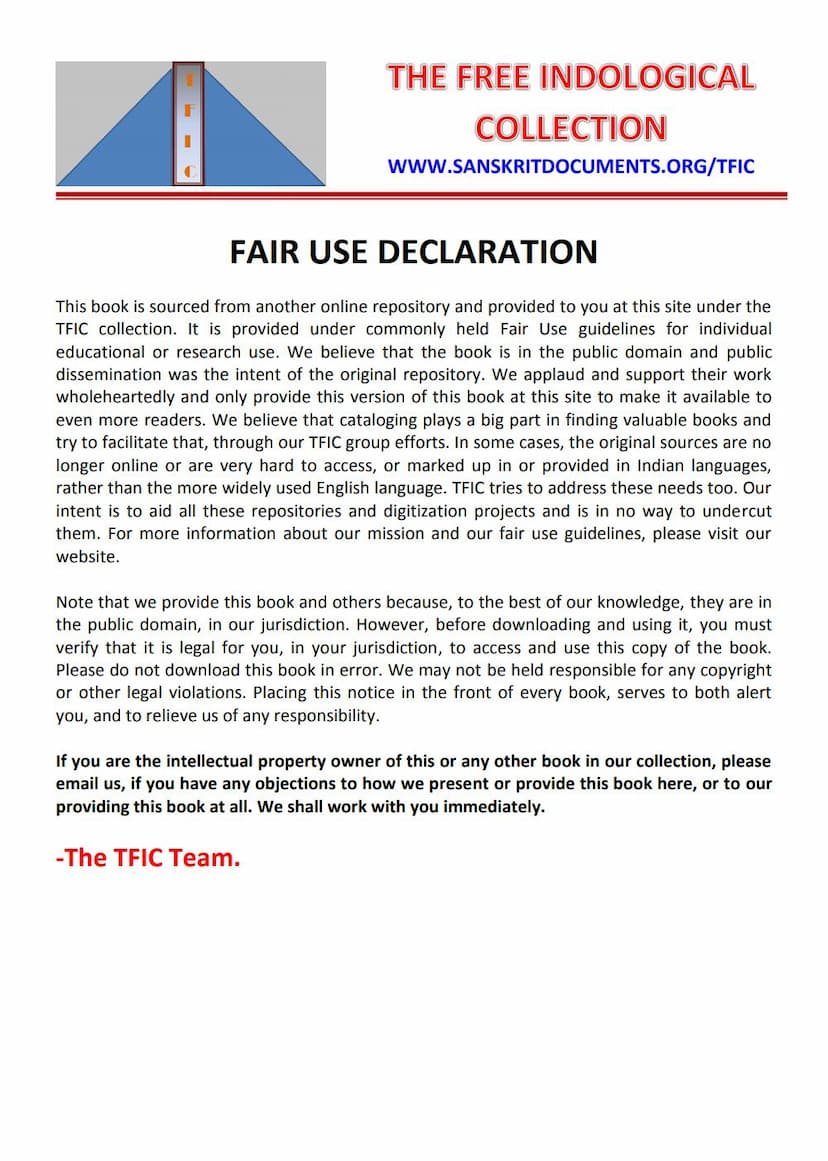Jain Path Or Path Of Conqueror
Added to library: September 2, 2025

Summary
This Jain text, "The Jain Path or Path of the Conqueror," is a translation of teachings by Shri Kundakundacharya, a prominent Jain saint who lived in the first century BC. The book aims to make these profound teachings accessible, particularly to those unfamiliar with Jain philosophy.
The central theme revolves around understanding the true nature of the Soul (Jiva) and distinguishing it from non-soul (Ajiva). The text emphasizes the concept of two standpoints:
- The Real Standpoint (Nishchaya Naya): This perspective focuses on the soul's inherent purity, its true nature as pure consciousness, knowledge, and bliss, unadulterated by any external matter or karmic influences. From this viewpoint, the soul is eternal, unchanging, and self-luminous.
- The Practical Standpoint (Vyavahara Naya): This perspective deals with the empirical reality of the soul as it exists in the mundane world, influenced by karmas and embodied experiences. It describes the soul's interactions with the material world, the process of karmic bondage, and the stages of spiritual development. This standpoint is seen as a necessary guide or interpreter to reach the Real Standpoint.
Key Concepts Explained:
- The Nature of the Soul: The soul is described as pure consciousness, luminous, and distinct from all physical and karmic matter. It is neither the body, nor the senses, nor the mind, nor any of its thoughts or emotions.
- Karma: The text elaborates on the eight types of karmas, their inflow into the soul, and how they cause bondage and influence the soul's experiences. It clarifies that while from the practical standpoint, the soul is seen as the doer of karmas, from the real standpoint, the soul is only the witness and not the doer.
- Bondage (Bandha): This occurs when the soul identifies with non-soul substances, such as karmic matter and its own impure thoughts (anger, pride, deceit, greed). The text uses analogies like a man covered in dust due to oil on his body to explain how attachment (like oil) causes the soul to attract karmic dust.
- Checking of Karmas (Samvara): This involves the cessation of karmic inflow by controlling impure thought activities. The right believer, by practicing right belief, right knowledge, and right conduct, checks the inflow of new karmas.
- Shedding of Karmas (Nirjara): This is the process of eradicating accumulated karmas through spiritual practices, austerities, and detachment. The text emphasizes that enjoyment without attachment, and experiencing the results of past karmas without generating new ones, leads to shedding.
- Liberation (Moksha): This is the ultimate goal, achieved by completely eradicating all karmas and realizing the soul in its pure, unadulterated state. It's like breaking free from shackles. Liberation is attained by understanding the true nature of the soul and non-soul, renouncing all attachments, and engaging in constant self-contemplation.
The Path to Liberation:
The book outlines the Three Jewels of Jainism (Triratna) as the path to liberation:
- Right Belief (Samyak Darshan): Understanding the true nature of the soul and non-soul.
- Right Knowledge (Samyak Gyan): Knowing the soul and non-soul as they truly are.
- Right Conduct (Samyak Charitra): Living in accordance with this understanding, which involves renunciation of passions and attachments.
The text stresses that external practices or observances are not the path to liberation if not accompanied by this inner realization. The true conqueror (Jina) is one who has conquered their own senses and inner impurities.
In essence, "The Jain Path" guides the reader towards self-realization by illuminating the distinction between the eternal, pure soul and the transient, material world, and by providing a framework for shedding karmic bondage through conscious effort and spiritual discipline.